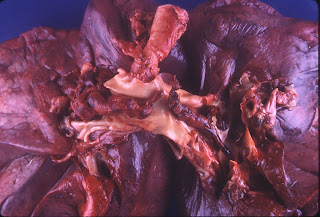Journal Club Summary
Prognostic value of plasma lactate levels among patients with acute pulmonary embolism: the thrombo-embolism lactate outcome study
Methodology: 3/5
Usefulness: 2/5
Vanni S, Viviani G, Baioni M, Pepe G, Nazerian P, Socci F, Bartolucci M, Bartolini M, Grifoni S.
Ann Emerg Med. 2013 Mar;61(3):330-8
The authors prospectively examined the prognostic value of serum lactate of ≥ 2 mmol/L in acute PE, and found an association with greater mortality (17.3% vs 1.6%, hazard ratio 11.67), independent of hypotension, right ventricular dysfunction or elevated Troponin I levels. The group at JC agreed on the value of such a hypothesis generating study, but concluded the clinical application of lactate in PE is not clear and they would have preferred a more thorough analysis of different serum lactate cutoff points.
By: Dr. Layli Sanaee
(Presented February 2013)
Epi Lesson – Hazard Ratio (HR)
The hazard ratio is akin to relative risk but is used for survival analyses such as Cox proportional hazards regression. It is most often used to describe the outcome of therapeutic trials where the question is, to what extent can treatment shorten the duration of an illness. The hazard ratio is an estimate of the ratio of the hazard rate in the treated versus the control group. For example if there are two groups, group 1 and group 2, HR = 4.5 for treatment means that the risk (of relapse) for group 2 is 4.5 times that of group 1.
By: Dr. Ian Stiell

